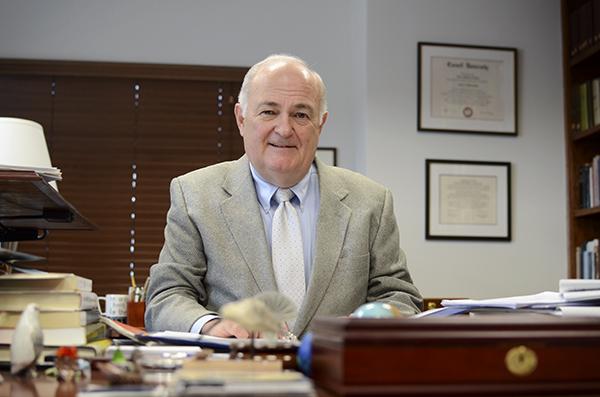After two years of lower-than-expected enrollment, University President Steven Knapp said enrollment for the University’s graduate programs has increased this fall.
The two years of declining enrollment led to 5 percent budget cuts across all divisions last year because of missed budget projections. The University will not release updated enrollment totals until October.
Because of the increase, Knapp said GW is in “better shape” and said there will be no further budget cuts. Graduate student enrollment peaked in 2012, when GW had 11,272 students enrolled in those programs.
“It has increased,” Knapp said. “I’m not saying it’s back to the high level, the all-time high point, but it’s certainly more than it was last year.”
He added that the past decline in enrollment mirrors a nationwide trend. During the recession graduate enrollment increased, but once students were able to get jobs in a healthier market, many universities saw declines like GW.
“As the job market loosens up they figure, ‘Well instead of going to graduate school, I’ll get a job,’” Knapp said.
The University depends on tuition for 75 percent of its operating revenue. Graduate enrollment dropped by a net of five students this year from the previous year, when the total declined by 156 students, according to data from the Office of Institutional Research and Planning. Still, GW’s total graduate enrollment has grown over the past five years — increasing 5 percent overall since 2010.
The Columbian College of Arts and Sciences increased its advertising on Facebook and Spotify this year in an attempt to highlight its graduate programs.
“Across the University, we’ve had to be more innovative because you can’t just rely on the programs you already have if people are not attending them at the levels they were,” Knapp said.
Senior Associate Provost for Enrollment Management Laurie Koehler said in an email that GW has created a new position — an assistant provost for international enrollment — and has also brought on a data analyst to work in the office of graduate enrollment.
The graduate enrollment management office has also partnered with the Columbian College and the International Student Offices to develop an English Language Institute. Koehler said this was a way to make the University “more attractive to international students by providing a more intensive English language program than what was previously available at GW.”
Each school is responsible for admitting and enrolling students in graduate programs, Koehler said, adding that individual colleges set enrollment targets.
“There is no one method for increasing graduate enrollment,” Koehler said. “Each individual school and even each individual program may need to approach enrollment differently.”
The decline in graduate enrollment has also trickled down to the undergraduate level. This year, GW accepted 45 percent of freshmen in an attempt to increase tuition revenue.
Colleen Murphy contributed reporting.








